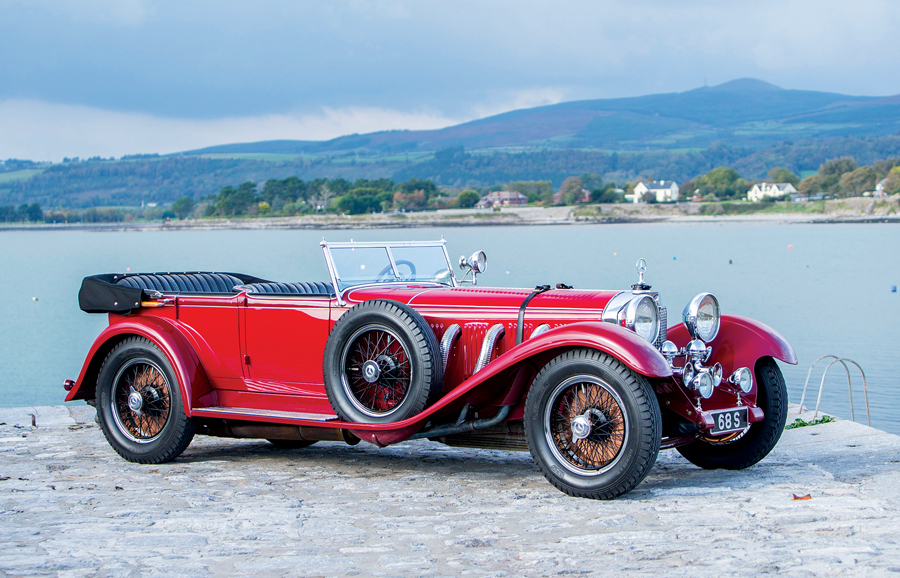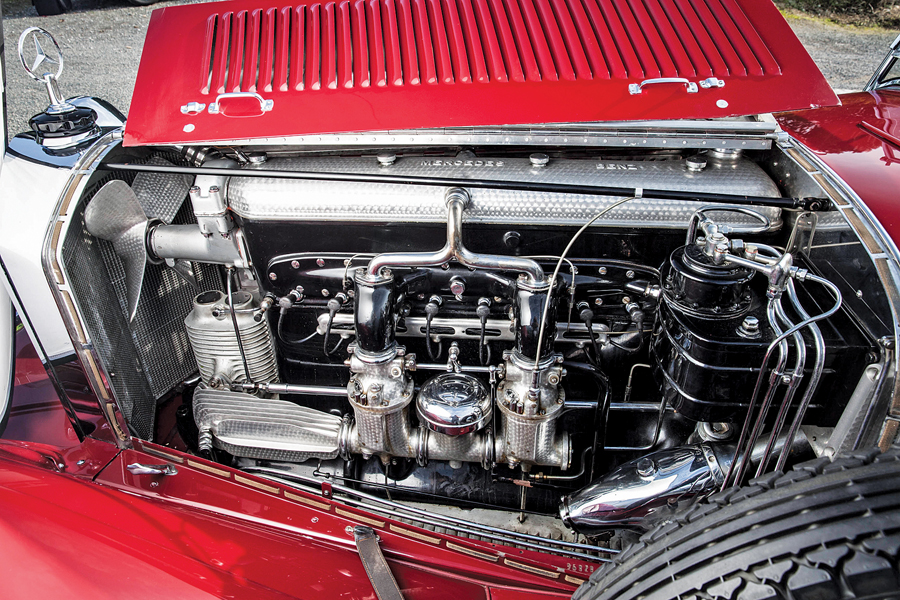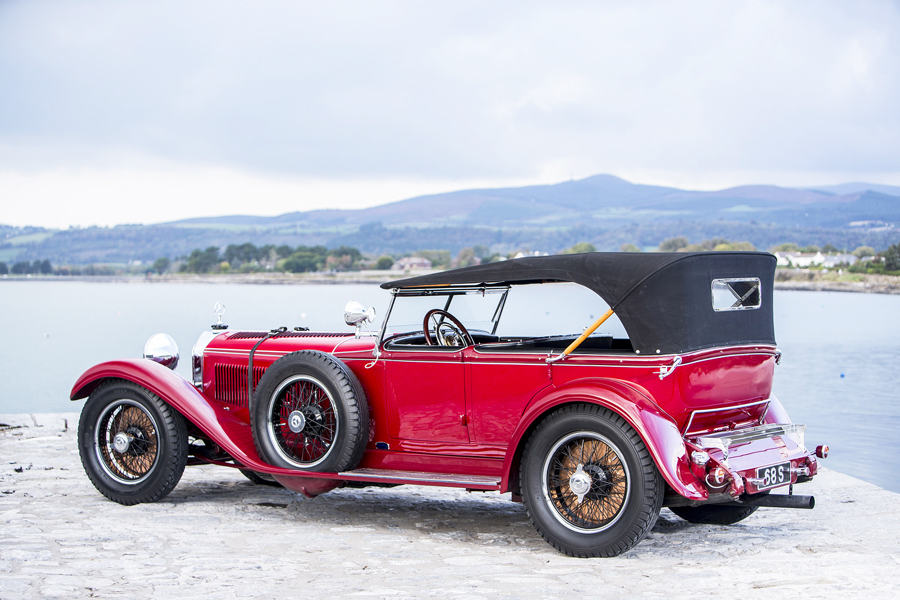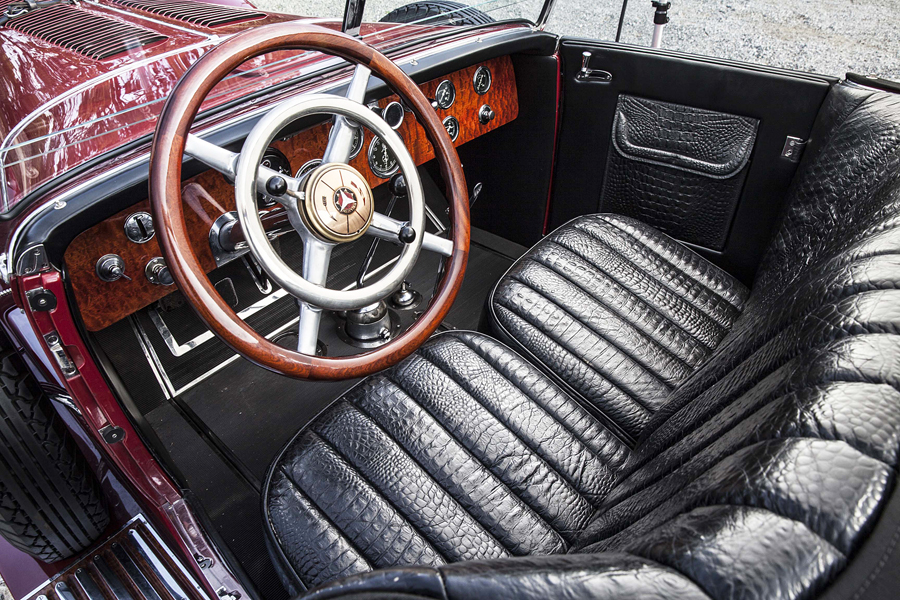SCM Analysis
Detailing
| Vehicle: | 1928 Mercedes-Benz Typ S 26/120/180 Supercharged Sports Tourer |
| Years Produced: | 1926–30 |
| Number Produced: | 146 to 174, depending on source |
| Original List Price: | $7,000 for the chassis only |
| SCM Valuation: | $4,543,394 |
| Tune Up Cost: | $3,000 |
| Club Info: | Mercedes-Benz Club of America |
| Website: | http://www.mbca.org |
| Alternatives: | 1928–35 Mercedes-Benz SS Tourer, 1928–32 Mercedes-Benz SSK Roadster, 1929–37 Duesenberg Model J |
| Investment Grade: | A |
This car, Lot 54, sold for $4,812,500, including buyer’s premium, at Bonhams’ auction in Scottsdale, AZ, on January 18, 2017.
In 1926, the first Mercedes-Benz was produced — following the merger of Karl Benz’s and Gottlieb Daimler’s firms.
The Mercedes-Benz Typ S, which was designed by Dr. Ferdinand Porsche, soon followed. As an aside, the “doctor” title that Porsche insisted upon was, in fact, an honorary degree.
The Typ S featured a 6.7-liter, 6-cylinder engine with two updraft carburetors and a Roots-type supercharger that kicked in — literally — when the accelerator was fully depressed. This resulted in an impressive 60 additional horsepower — for a total of 180. The 24/100/180 in the model description was the taxable horsepower, actual horsepower and the horsepower with the supercharger engaged.
A dominating racer in period
The new Typ S cars placed 1st, 2nd and 3rd in the 1927 Eifelrennen, which was the first race at the Nürburgring. The Typ S cars ran away with the race, with driver Rudolph Caracciola taking the win.
Racing in the era was a bit different than what we experience today.
As described in Beverly Rae Kimes’ book, The Star and the Laurel, “Only race drivers could make repairs. Caracciola got out, pulled the first plug and tossed it to Porsche, who checked it with a magnifying glass and tossed it back: It was all right, as was the second, the third, the fourth … until the eighth turned out to be the bad one.”
Even with the lost time, Rudolph Caracciola went on to win the first Grand Prix of Germany.
The Typ S, for “sport,” was low to the ground, which greatly enhanced the handling and balance. Caracciola was almost unbeatable in the Typ S, and the international reputation of Mercedes-Benz was firmly entrenched.
Was the S a race car that could be used as a Grand Touring car or just the opposite? Well, as stated in Kimes’ book, “It was as close to a race car as could be built without actually building one.”
The car to have
The late 1920s was a unique period in our history, and those with wealth wanted to enjoy it. The Mercedes-Benz S, with its on-track success and powerful engine, provided an unparalleled grand touring experience for those who could afford it.
Sources vary as to how many of these magnificent machines were produced between 1927 and 1930, some mentioning 146 and others as many as 174. The chassis, with a price tag of more than $7,000, was sent to elite coachbuilders such as Saoutchik and Freestone and Webb — who performed their magic for clients that included European royalty, actors, pilots and race drivers.
The Berlin firm Erdmann & Rossi bodied our subject S. Erdmann & Rossi didn’t body many S cars.
The car was destined for the Mercedes-Benz Company in New York, and factory records indicate it was first acquired in January of 1929.
The trail then goes cold until it was discovered in the early 1960s in relatively unmolested condition. It later ended up in the hands of a noted Texas collector, who was responsible for its restoration. It appeared at the 1996 Pebble Beach Concours d’Elegance, where it won First in Class and the Most Elegant Open Car award. These are very prestigious awards.
Today, the car’s 20-year-old restoration presents well, and the exterior exhaust, Carl Zeiss headlamps and Bosch horns are an imposing sight. Interestingly, it wears a single Mercedes-Benz badge in the center of the V of the grille, as was done on the SS models — rather than the three-pointed star on either side of the grille as was done with other Typ S cars.
The Typ S was the fastest car of the era, and it was the foundation for the famed SS and SSK cars that followed.
These rare cars rarely come to market. However, Gooding & Co. sold a Typ S Sportwagen in 2011 for $5,040,000. It was the actual car that won the 1927 Nürburgring race, which is history our subject car can’t duplicate.
Even so, with its Erdmann & Rossi coachwork and well-maintained condition, the price paid for this rare Typ S is certainly within reason. ♦
(Introductory description courtesy of Bonhams.)



